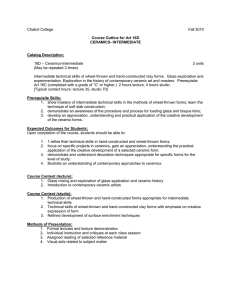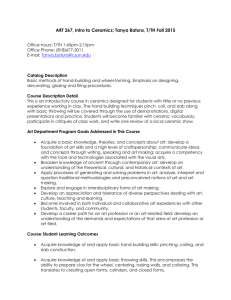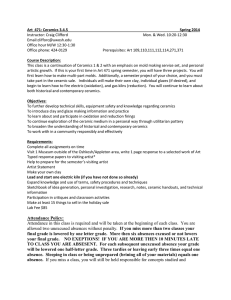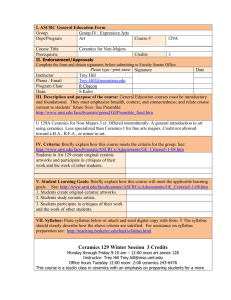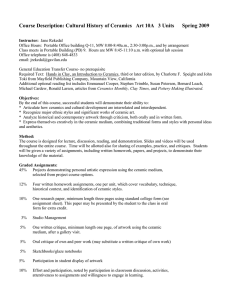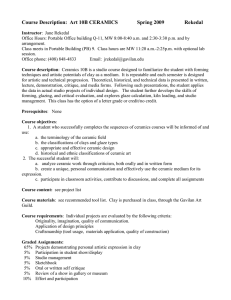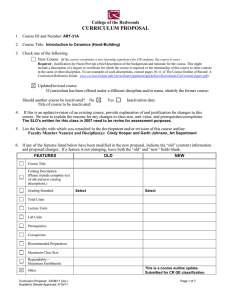Chabot College Fall 2008 3 units
advertisement
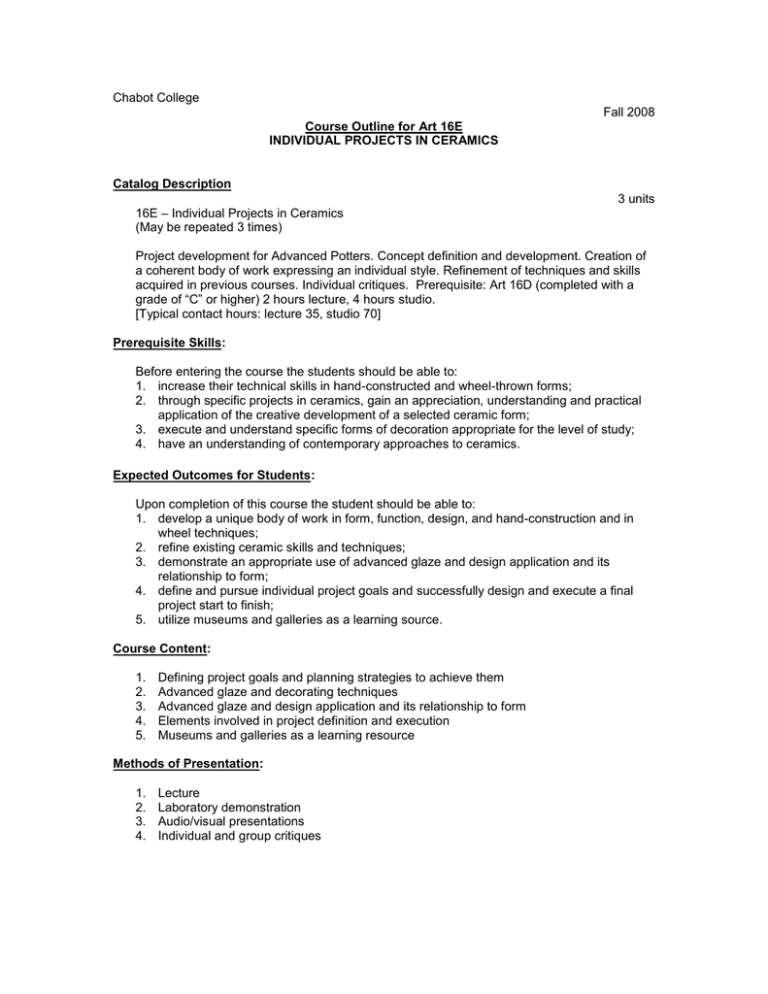
Chabot College Fall 2008 Course Outline for Art 16E INDIVIDUAL PROJECTS IN CERAMICS Catalog Description 3 units 16E – Individual Projects in Ceramics (May be repeated 3 times) Project development for Advanced Potters. Concept definition and development. Creation of a coherent body of work expressing an individual style. Refinement of techniques and skills acquired in previous courses. Individual critiques. Prerequisite: Art 16D (completed with a grade of “C” or higher) 2 hours lecture, 4 hours studio. [Typical contact hours: lecture 35, studio 70] Prerequisite Skills: Before entering the course the students should be able to: 1. increase their technical skills in hand-constructed and wheel-thrown forms; 2. through specific projects in ceramics, gain an appreciation, understanding and practical application of the creative development of a selected ceramic form; 3. execute and understand specific forms of decoration appropriate for the level of study; 4. have an understanding of contemporary approaches to ceramics. Expected Outcomes for Students: Upon completion of this course the student should be able to: 1. develop a unique body of work in form, function, design, and hand-construction and in wheel techniques; 2. refine existing ceramic skills and techniques; 3. demonstrate an appropriate use of advanced glaze and design application and its relationship to form; 4. define and pursue individual project goals and successfully design and execute a final project start to finish; 5. utilize museums and galleries as a learning source. Course Content: 1. 2. 3. 4. 5. Defining project goals and planning strategies to achieve them Advanced glaze and decorating techniques Advanced glaze and design application and its relationship to form Elements involved in project definition and execution Museums and galleries as a learning resource Methods of Presentation: 1. 2. 3. 4. Lecture Laboratory demonstration Audio/visual presentations Individual and group critiques Chabot College Course Outline for Art 16E, Page 2 Fall 2008 Assignments and Methods of Evaluating Student Progress: 1. Typical assignments: a. Go to museums and galleries to choose specific artists’ techniques and concepts that you can incorporate into your own projects. b. Select a specific project in consultation with instructor. c. Define, develop and create a series of forms to convey your concept. 2. Methods of Evaluating Student Progress a. Class participation, individual critique, discussions b. Completion and evaluation of final student project Textbook(s) (Typical): Hands in Clay. Charlotte F. Speight, John Toki. Mayfield Publishing, 2004. Alternative Kilns & Firing Techniques. James C. Watkins and Paul Andrew Wandless. Lirk Books 2004 Periodicals: Ceramic Monthly 1. American Craft Special Student Materials: Clay and specialized tools PC:F:\iFolder\Art 16E2008 New: 5/29/2016



